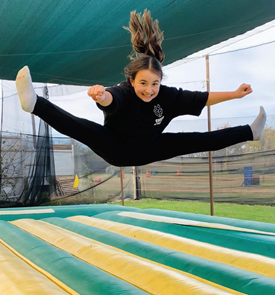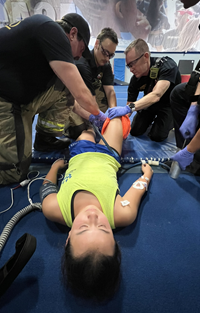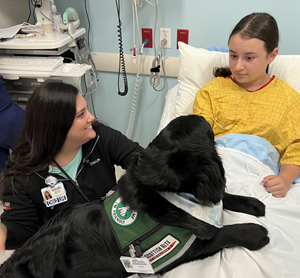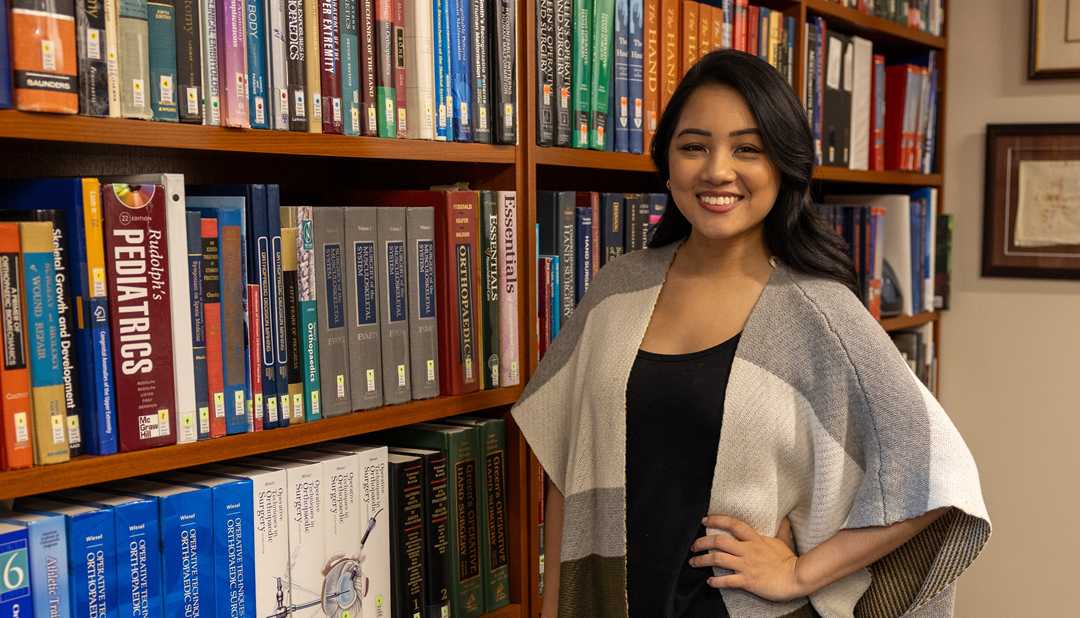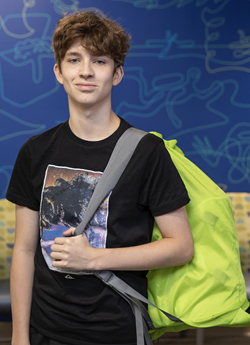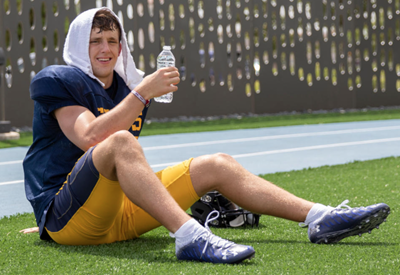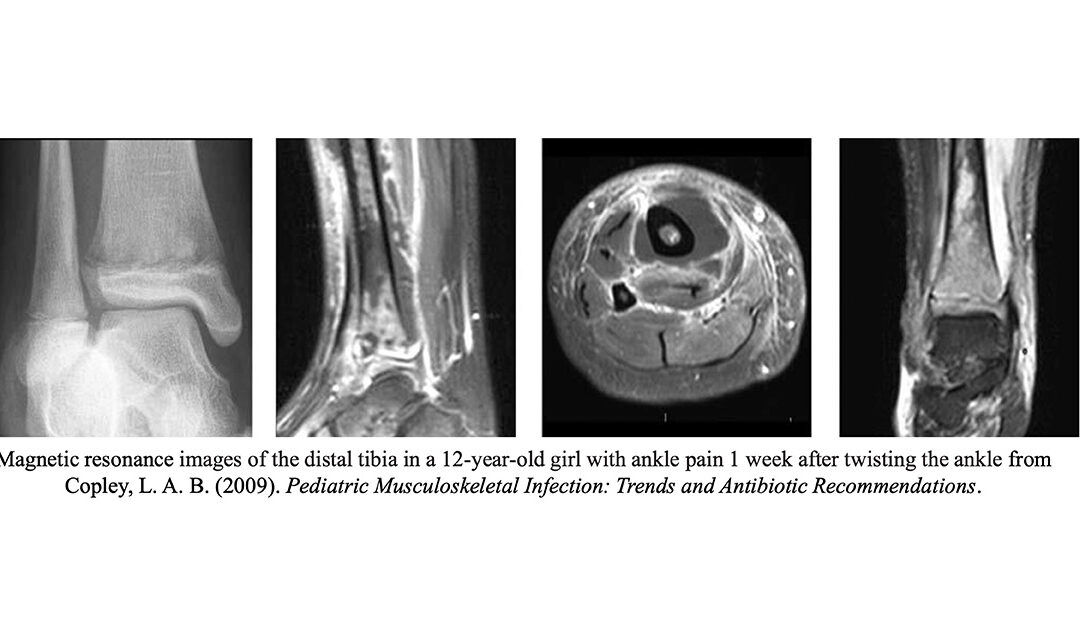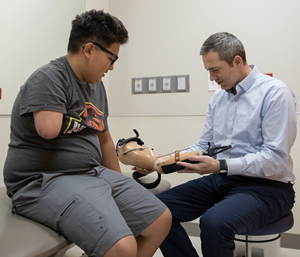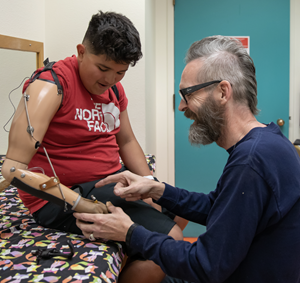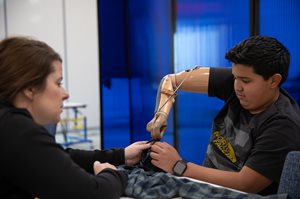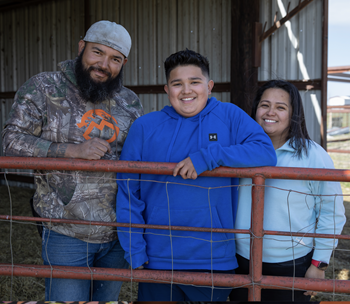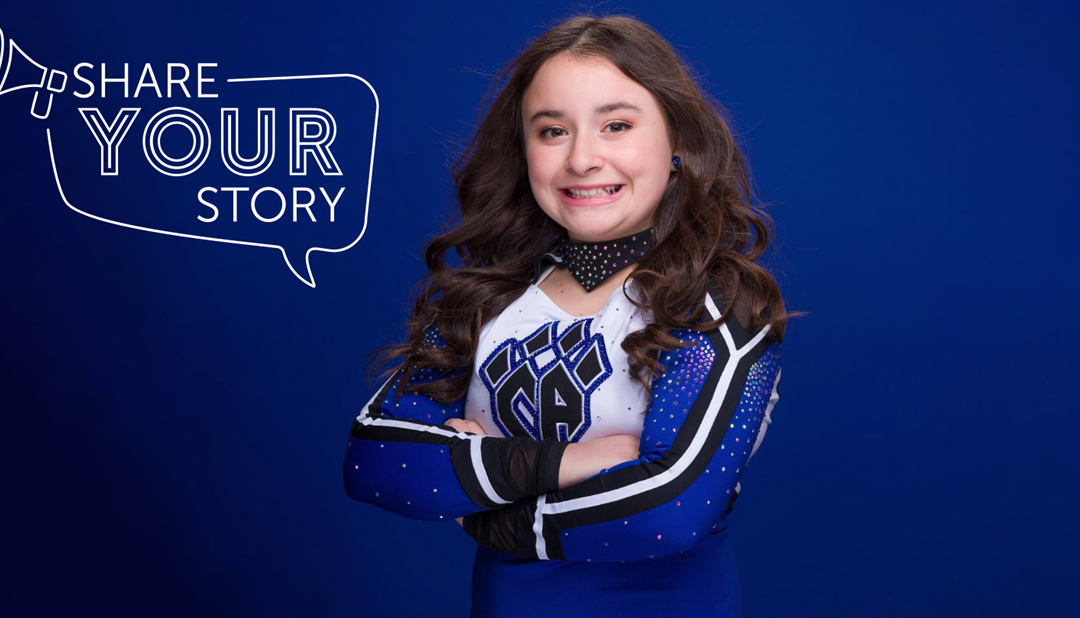
Share Your Story: Bria’s Big Break
Bria is a 12-year-old girl who stays busy with a variety of activities. From cheerleading, playing on her trampoline, hanging out with her friends and swimming, she is always on the move. After being diagnosed with Osgood-Schlatter disease, a condition that causes inflammation of the patellar ligament and creates a painful bump just below the knee, Bria and her family came to the Scottish Rite for Children Orthopedic and Sports Medicine Center for treatment. Bria’s mom, Krista, shares their experience in this Share Your Story:
We came to Scottish Rite for Children’s Center for Excellence in Sports Medicine a few years ago for treatment of Osgood-Schlatter disease in Bria’s knee and various cheer-related aches and pains. We really loved Stephanie De Jager, M.S.N., CPNP, and she became our go-to “person” when Bria had injuries.
Last year at an open gym one evening, Bria was tumbling and broke her tibia and had emergency surgery at another Dallas hospital. She fractured it through the growth plate and had compartment syndrome to make things worse. Once she was finally discharged, as the mom, I fell apart when we got home. I didn’t have our “people” to tell me everything was going to be ok, so I called Stephanie. She called me and talked to me at length, reassuring me that we could always switch and follow up later at Scottish Rite. We tried to give the other hospital a chance, but our heart was at Scottish Rite.
At our follow up, their plan of care was hasty, and they didn’t listen to me in discussing her projected growth before scheduling surgery, so we transferred Bria to Scottish Rite for further care. Thank goodness we did, because we got to meet Dr. Ellis, and we absolutely adored him. He really listened and took the time to look at Bria’s realistic growth based on our family heights and her puberty. We watched and waited for almost a year, and each appointment he was conservative and not quick to operate.
Finally, almost a year later, we pulled the trigger and had to do some growth plate modification for limb inequality and to correct a valgus. Our experience was completely different from the first surgery at the other facility. They took the time to explain at length every detail and answer all my million questions, never judging me for my hesitation. Child life specialist Marissa Willis sat with Bria and acknowledged the trauma of her first experience last year. She reassured her that this would be so much different, explaining every step she would experience on surgery day.
I can’t say enough about how amazing Scottish Rite is, and we will forever sing your praises. My husband and I both said we want to work at Scottish Rite! Bria’s grandfather couldn’t stop talking about how impressed he was with the facility. He kept saying, “This place is FIRST CLASS!” From the smell of popcorn the moment we walked in, to the kind nurses helping her into the car, this day could not have been any more perfect (for a surgery day that is!).
Learn more about our Center for Excellence in Sports Medicine.DO YOU HAVE A STORY? WE WANT TO HEAR IT! SHARE YOUR STORY WITH US.

